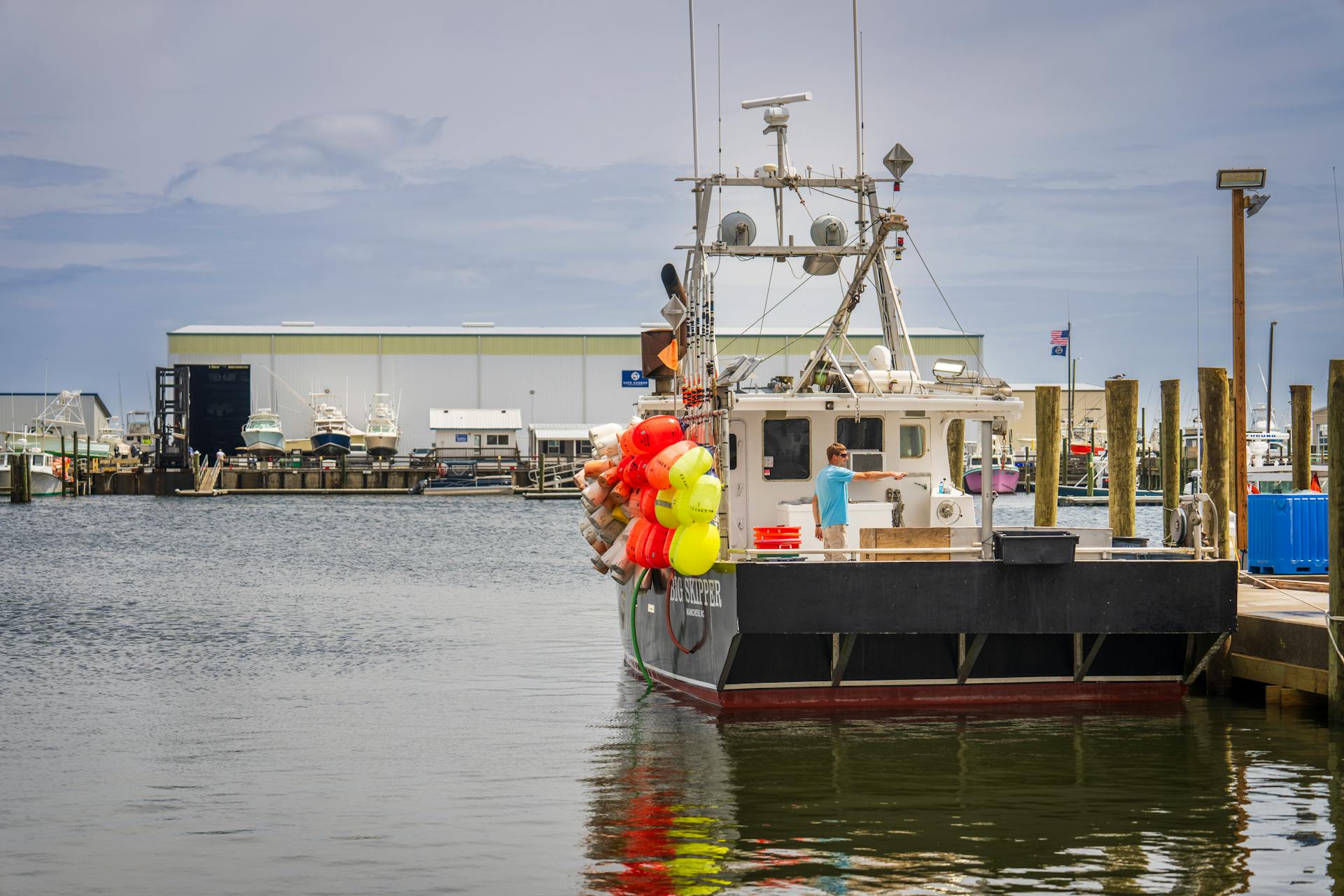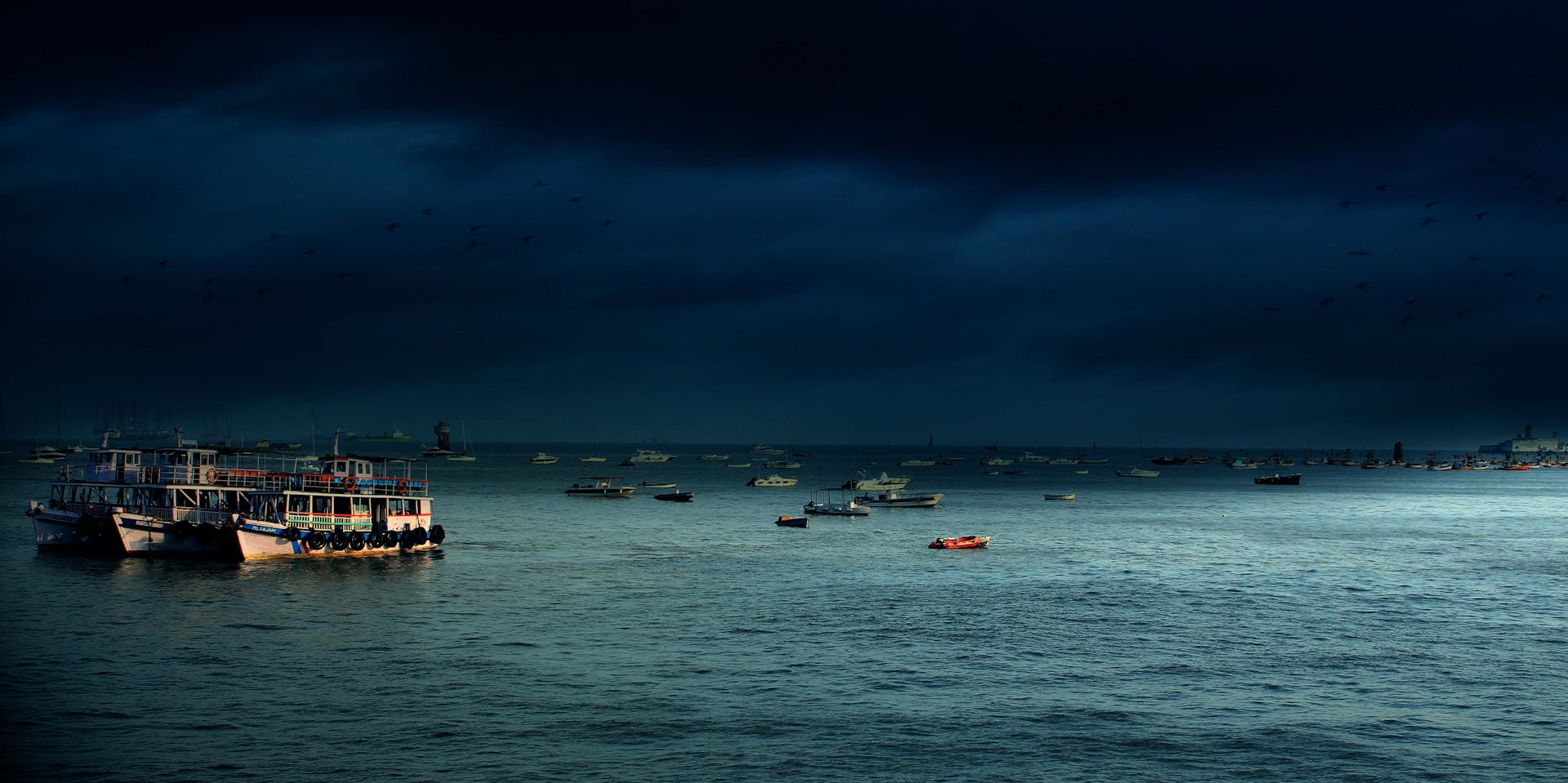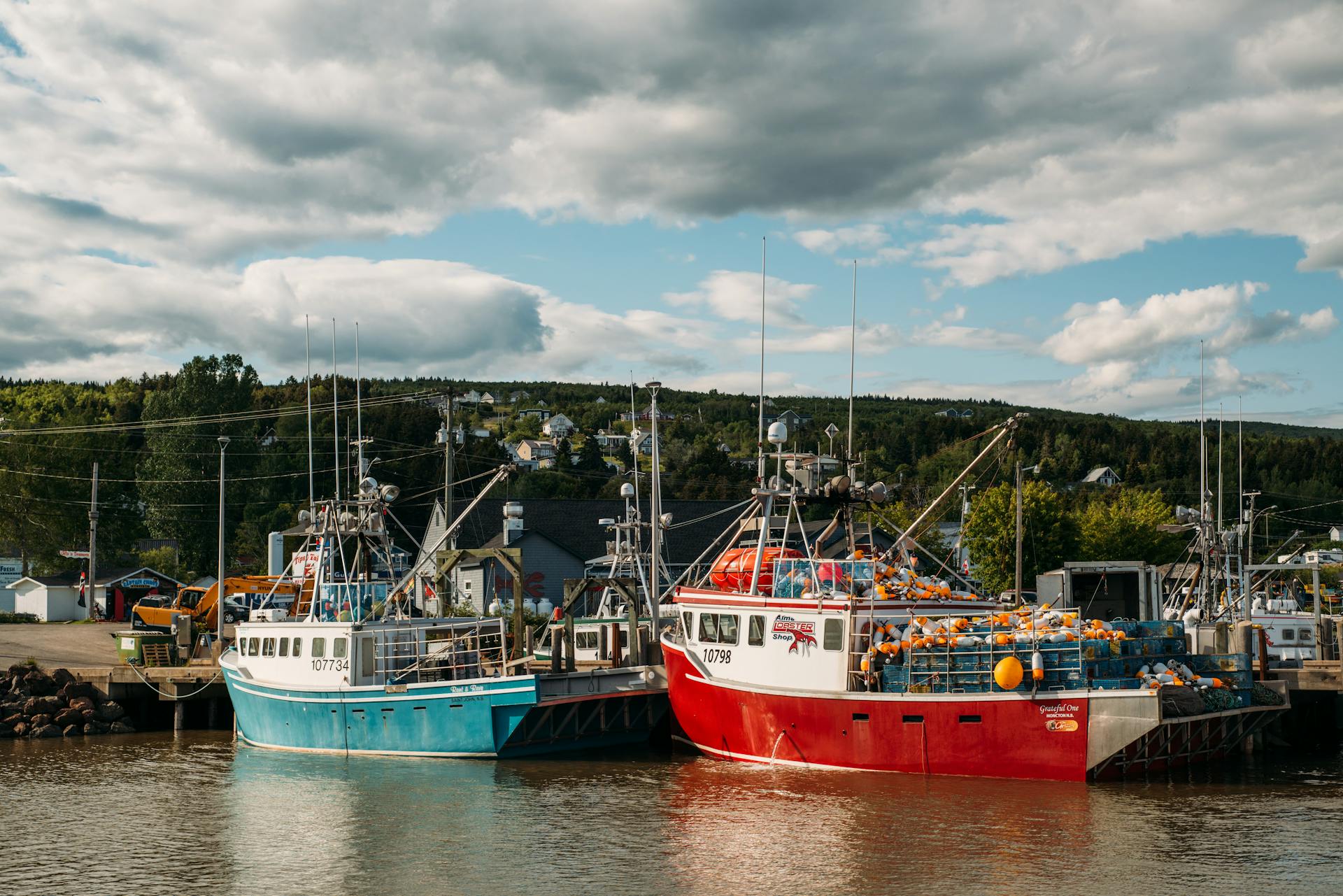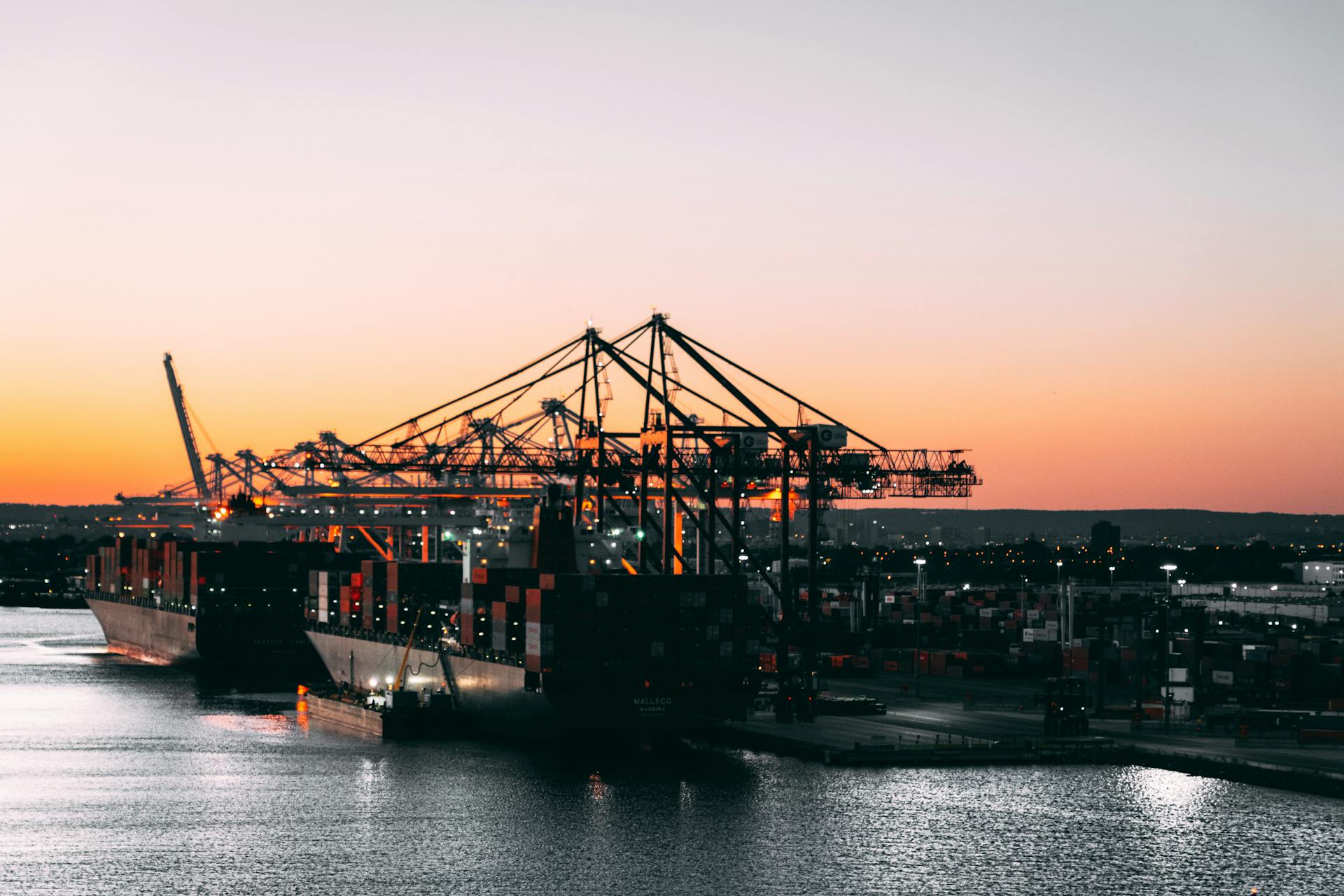
The Albert Bosomtwi-Sam Fishing Harbour is set to become a major fish port, a game-changer for the fishing industry. It's a massive project that will have a significant impact on the local economy.
Located in Ghana, the harbour is being built to cater to the growing demand for fish and seafood. The harbour will provide a safe and efficient way to transport fish from the fishing boats to the markets.
The harbour is expected to create jobs and stimulate economic growth in the region. This is great news for the local community, who will benefit from the increased economic activity.
Bosomtwi-Sam Harbour Development
The Albert Bosomtwi-Sam Fishing Harbour has been identified as ideal and strategically located to serve as the Fish Port for West Africa.
Located in Essikadu, the harbour has a good security network and lies in rich fishing grounds in the sub-region.
The harbour currently has a daily 25kg ice making plant, large landing wharfs, a 200 metre breakwater, an 80 metre canoe jetty, and 502 metres of access road.
It's only 13 kilometres from the city centre, making it easily accessible.
The harbour raised 141 million cedis in 1999 but is expected to realise between 1.6 and two billion cedis in revenues.
The harbour's expansion is progressing steadily, with 40 per cent of the work already completed.
The remaining portion is scheduled to be done in the next 11 months, and when completed, the harbour will create more landing space and open up the fishing harbour to contain 126 inshore vessels and canoes.
The harbour currently can only contain 50 fishing vessels, which is a major challenge for the fishermen who use it.
The harbour's ice making capacity is also a challenge, as it could not cater for the increase in ice demand due to the increase in landing volume.
Fishermen are compelled to use low quality ice transported from neighbouring areas.
The harbour's expansion will include the construction of a berthing space, breakwaters, a drive way, and an additional ice plant.
This will pave the way for mooring more vessels and allow safe and secure mooring that can facilitate the unloading or loading of cargo or people from vessels.
The harbour was constructed through a Japanese Grant of 13.5 million Dollars for the provision of modern fish landing and handling support facilities and services for inshore boats and large canoes.
The harbour covers 1.4 hectares of land and 12.6 hectares of water, and is 15 kilometres from the main Takoradi Port.
The harbour's expansion is being undertaken by Ecoh Corporation, a Japanese firm contracted to undertake the project.
The Japanese government has allocated an additional US$ 20 million for the second phase of the harbour's expansion.
Bosomtwi-Sam Harbour to Serve as Fish Port
The Albert Bosomtwi-Sam Fishing Harbour has been identified as the ideal location to serve as the Fish Port for West Africa. This is due to its competitive prices, good security network, and rich fishing grounds in the sub-region.
Located at Essikadu, the harbour has a daily 25kg ice making plant, large landing wharfs, a 200 metre breakwater, an 80 metre canoe jetty, and 502 metres of access road. This infrastructure makes it an attractive option for fishermen and fishing-related businesses.
The harbour is only 13 kilometres from the city centre, making it easily accessible. However, the lack of land for expansion is a major challenge facing the harbour.
The harbour's revenue is expected to increase significantly, from 141 million cedis in 1999 to between 1.6 and two billion cedis. This is due to a range of fees and charges, including ice blocks, pedestrian entry toll, port dues, fresh water, places of convenience, vehicle toll, fines, and others.
The harbour was constructed through a Japanese Grant of 13.5 million Dollars for the provision of modern fish landing and handling support facilities and services for inshore boats and large canoes.
Sources
- https://en.wikipedia.org/wiki/Albert_Bosomtwi-Sam
- https://www.graphic.com.gh/news/general-news/ghana-news-new-premix-shed-for-bosomtwe-sam-fishing-harbour-handed-over.html
- https://www.ghanaweb.com/GhanaHomePage/NewsArchive/Bosomtwi-Sam-Harbour-to-serve-as-Fish-Port-for-West-Africa-59003
- https://www.graphic.com.gh/news/general-news/expansion-of-albert-bosomtwe-sam-fishing-harbour-progressing.html
- https://www.pulse.com.gh/articles/ece-frontpage/gpha-sekondi-fishing-habour-expansion-project-begins-in-july-2024080220022698308
Featured Images: pexels.com


